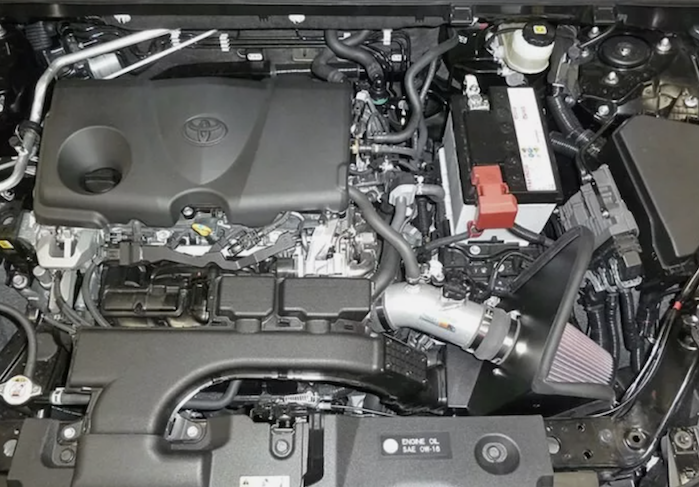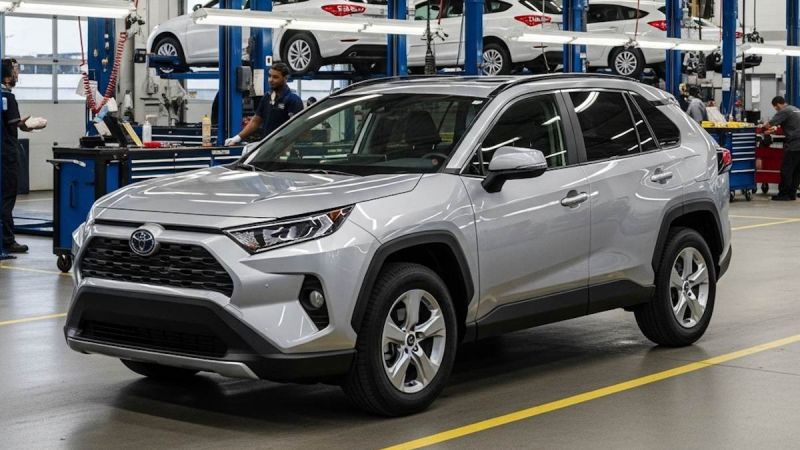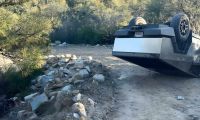It's essential to perform the 30,000-mile service that Toyota recommends for the Toyota RAV4. But how about an induction cleaning service that some Toyota dealers offer?
That's the question Jason Derting wants to know as he posts a question on the Toyota RAV4 Discussion Group Facebook page. Is it a legitimate service performed by the dealer, or is it a scam to generate revenue for the dealer?
Jason says, "I usually do most of the service that the Toyota dealer suggests. Today, our 2022 Toyota RAV4 Hybrid with 55,000 miles was recommended for a fuel induction cleaning that was supposed to be done at the 30,000-mile service."
"They also wanted $300 for this? I declined because I figured I would've heard about it before 25,000 miles later. Is it necessary, or is it a scam? Any insight on doing that myself?"
First, what does Toyota recommend for the 30,000-mile service on the Toyota RAV4?
According to Toyota's general maintenance recommendations, a 30,000-mile service for a Toyota RAV4 typically includes:
- Engine oil and filter replacement
- Tire rotation and pressure check
- Fuel system inspection
- Replacement of the engine and cabin air filters
- Various lubrication and inspections of other components
It does not indicate that the RAV4 requires an induction system cleaning service.
Is an Induction System Cleaning for a 2022 Toyota RAV4 at 30,000 Miles needed, or is it a way for the Toyota service department to make more money?
Induction system cleaning is not explicitly listed as a mandatory part of the standard 30,000-mile maintenance schedule for a 2022 Toyota RAV4.
However, here's what to consider:
- Owner's Manual: Always refer to your vehicle's specific owner's manual for the most accurate and detailed maintenance schedule.
- Driving Conditions: Certain driving conditions, such as frequent travel through dusty areas or stop-and-go traffic, may require more frequent cleaning of the induction system.
- Performance Issues: If you're experiencing symptoms such as decreased fuel economy or poor engine performance, an induction cleaning may be beneficial.
- Dealership Recommendations: Although induction cleaning may not be included in the standard schedule, dealerships sometimes recommend it based on their assessment of your vehicle and driving history. However, it's a good idea to discuss the specific reasons with your service advisor.
Note: Typically, Toyota and other new car dealers use aftermarket cleaners rather than Toyota OEM cleaners.
Some of these aftermarket cleaners are high-quality products, while others are not. Some work, some don't.
Several companies sell these products to new car dealers, generating additional profits for the Toyota dealers' parts and service departments.
The Toyota service advisor also gets a "spiff" (or commission) from these companies to sell the induction service. The more they sell, the more they earn and contribute to their advisor's salary. Toyota does not pay for the spiff, but it comes from the aftermarket company.
It's also important to know that the service tech who performs the induction cleaning service also receives a "spiff" when they use the aftermarket company's product. There is a small plastic "coin" in the can that they save and turn into the aftermarket companies' sales representative every month. This spiff is also not paid for by Toyota but by the aftermarket company.
To answer Jason's question, it's not a scam by the Toyota dealer but rather a way for the parts department, service department, and service technicians to generate additional income.
The product itself costs about $40 for the dealer to purchase from the aftermarket company. Therefore, the dealer earns a hefty $260 profit every time they sell a service. If they can sell 5 of these per day, that's an additional $36,400 profit for the dealer per month. They have a real incentive to sell the service to their customers.
Is the service needed?
In summary, while the induction service cleaning is not a mandatory part of the standard 30,000-mile service, it could be beneficial if you're experiencing reduced power and fuel mileage. Understanding this, you can make an informed decision about whether this service is necessary for your Toyota RAV4.
Jason asks, Can I do the service myself?
Yes, you can. By focusing on cleaning the throttle body and adding fuel system cleaner to the gas tank, you can effectively clean your Toyota RAV4's induction system. This empowers you to take control of your vehicle's maintenance and potentially save on service costs.

Cleaning the Throttle Body:
- Locate the Throttle Body: It's typically found where the air intake hose connects to the engine.
- Gather Supplies: You'll need a bottle of throttle body cleaner and some rags.
- Remove the Air Intake Hose: Carefully detach the hose from the throttle body.
- Spray and Wipe: Spray the throttle body cleaner onto the throttle plate and other internal components of the throttle body.
- Wipe Clean: Use a clean rag to wipe away the loosened deposits.
- Reattach the Hose: Securely reconnect the air intake hose.
Adding Fuel System Cleaner:
- Choose a Fuel Cleaner: Opt for a reputable fuel system cleaner like Chevron Techron, Liqui Moly, or BG 44K.
- Add to Tank: Add the cleaner to a full tank of gas.
- Drive: Drive the vehicle as you normally would to allow the cleaner to work its magic.
The total cost? About $35 for both throttle body cleaner and fuel system cleaner.
In The End
In summary, although not a mandatory part of the standard 30,000-mile service, your Toyota RAV4 may benefit from cleaning the induction system if you are experiencing a significant reduction in fuel mileage. If not, you don't need to do it.
Remember, the decision to proceed with the induction service cleaning is ultimately yours. You have the right to make informed choices about your vehicle's maintenance, free from any sales pitches or external pressures.
It's Your Turn
Have you had an induction cleaning service performed by a Toyota dealer or another new car dealer? What is your experience? If so, click the red Add New Comment link below and let us know.
Check out my Toyota RAV4 story: My 2023 RAV4 Has Been To the Toyota Dealer For 3 Different Issues, They Still Don’t Know How To Fix Any Of Them
I am Denis Flierl, a Senior Torque News Reporter since 2012. My 30+ year tenure in the automotive industry, initially in a consulting role with every major car brand and later as a freelance journalist test-driving new vehicles, has equipped me with a wealth of knowledge. I specialize in reporting the latest automotive news and providing expert analysis on Subaru, which you'll find here, ensuring that you, as a reader, are always well-informed and up-to-date. Follow me on my X SubaruReport, All Subaru, WRXSTI, @DenisFlierl, Facebook, and Instagram.
Photo credit: Denis Flierl













Comments
Thanks for your post. You…
Permalink
Thanks for your post. You saved me $190. I will service myself.